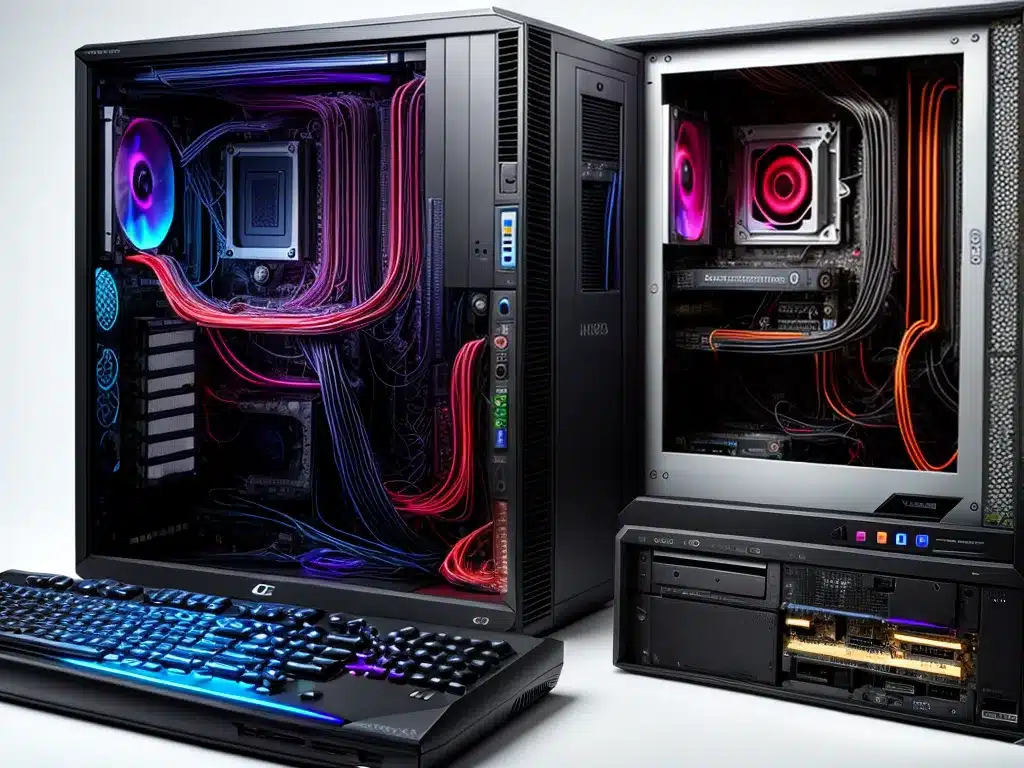If you’ve had the same desktop or laptop PC for several years, it may be time to consider an upgrade. There are a few signs that indicate your trusty old computer is no longer up to the demands of modern computing.
Performance Issues
One of the most obvious signs that your PC needs an upgrade is slow performance. If simple tasks like launching applications, browsing the web, or editing documents have become frustratingly sluggish, it’s likely your hardware is to blame.
Some symptoms of an underpowered PC include:
- Long load times when starting up programs or loading files
- Frequent freezing or crashing when multitasking or running demanding software
- Choppy playback when watching HD video or playing games
Upgrading components like the CPU, RAM, or switching to an SSD can significantly improve speeds on an aging computer.
No Longer Receiving Updates
Another indication your PC is due for replacement is if it’s no longer receiving software and security updates from the manufacturer.
Microsoft and Apple regularly issue important OS updates to fix bugs, patch security vulnerabilities, and add new features. If your hardware is outdated, at some point it will be incompatible with the latest updates.
Without updates, old PCs are more prone to:
- Viruses and malware
- Stability issues from lack of bug and performance fixes
- Missing out on new features that improve usability
So if you can’t update to the newest OS version, it’s a sign your system is too old and needs to be retired.
Hardware Failures
Failing or malfunctioning hardware components are a clear giveaway that your PC is past its prime.
Some aging parts prone to failure include:
- Hard drives – can develop bad sectors or mechanical issues over time.
- Power supplies – may no longer provide stable, clean power to components.
- Fans and cooling – can break down causing dangerous overheating.
Repairing individual components is often temporary. If you’re regularly encountering hardware failures, replacing the entire unit may be the most cost-effective solution.
Can’t Run New Software
The newest software releases also tend to have higher system requirements than programs from a few years ago.
If you find your PC struggles to run the latest versions of essential software like:
- Your web browser
- Office/productivity suites
- Photo, video, or audio editing tools
Then it may not have the necessary specs to keep up with new software advancements. Upgrading allows you to reap the benefits of improved workflows, features, and speed offered by newer applications.
What are the Upgrade Options?
If the signs point to your aging PC needing replacement, you have a few options:
- Replace individual components like the RAM, graphics card, storage to improve performance.
- Perform a clean OS reinstall to refresh the software side.
- Buy a new PC that meets your current performance, connectivity, and feature needs.
Which path you choose depends on your budget, how long you intend to keep the PC, and whether your demands have changed. For many, there comes a time when continuing to upgrade outdated hardware yields diminishing returns versus starting fresh with new components optimized to work together.
The Bottom Line
When an old PC’s performance, reliability, and compatibility begins to negatively impact productivity, it’s probably time to consider an upgrade. Regularly backing up your data makes the transition less painful when the inevitable day comes to retire your aging tech. With a shiny new PC, you can look forward to restored speed, stability, and access to cutting-edge features.












